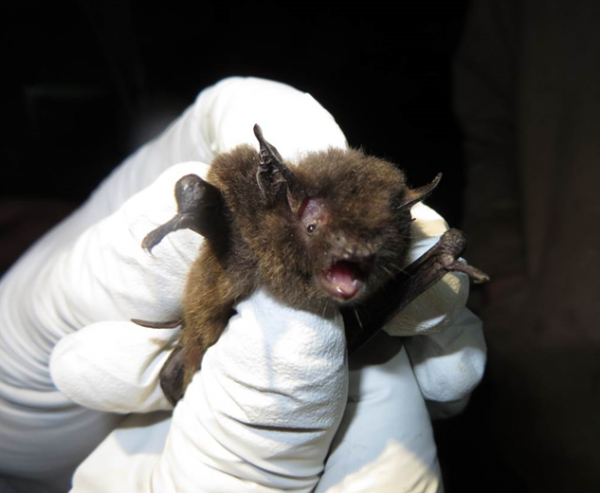
Alaska Fish and Game is stepping up its research on bats in Southeast. The nocturnal, bug-eating animal is being threatened in the Lower 48 by a disease called White-Nose Syndrome. That’s prompting Alaska researchers to find out which bats live here and where they roost. But they can’t do all the work by themselves, so they’re enlisting the public’s help.
“That’s bats! That’s it! Isn’t that cool?” Pam Randles said, as the sound of bats came through the speakers. The sun has just set, and she is driving her car 20 miles per hour along the Chilkoot River.
“You drive along very slowly and you keep a steady pace and all of a sudden chitter, chitter chitter and it’s like, whoa! It worked! You really can hear them!” Randles said.
Now, the human ear can’t hear bat sounds. So Randles’ car has been turned into a bat mobile. There’s an ultrasonic microphone attached to the top of the car, and a little box inside that records the bat calls. A GPS pinpoints the location of the sounds.
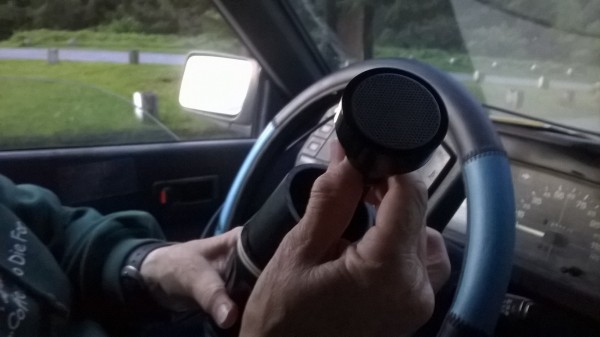
Michael Kohan is a biologist with Fish and Game and one of the researchers on the bat study.
“I mean, it’s a huge project,” Kohan said. “We couldn’t do it without citizen scientists.”
The research started in 2011. But last year, they ramped up their efforts by getting citizen scientists involved in acoustic driving surveys.
“Anybody can go out and record bat calls,” Kohan said. “So at night, 45 minutes after sunset, we have a certain route where we’re interested in seeing what bat species are on that route and where are they are. And people will go out and record bat calls as they drive.”
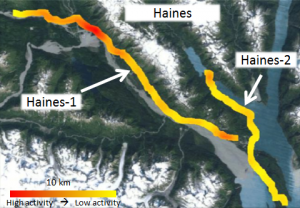
Kohan says last summer the surveys were hugely successful in the first two communities – Haines and Gustavus. 30 volunteers participated. This summer, Kohan is expanding the program to Juneau, Craig, Petersburg, Wrangell and Sitka.
In Haines, the library has a sign-up sheet for the bat detectors. But when the people collecting data are not scientists, can you trust them?
“The way that our research project is orientated is we’re asking specific information from citizen scientists that provides no room for failure,” Kohan said.
You just put the microphone on your car, turn on the microphone and GPS, and drive.
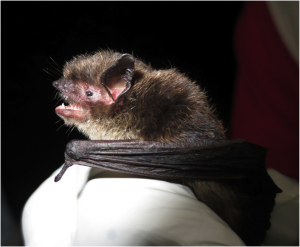
Kohan says they’ve identified four bat species in Haines and Gustavus. They include the silver-haired bats, little brown bats and California bats.
Getting a sense of bat activity here gives scientists a baseline in case the disease White-Nose Syndrome spreads to Alaska. Since 2006, scientists estimate 80 percent of the bat population in the Northeastern U.S. died from White-Nose Syndrome.
“It is a threat to bats right now, a big threat to bats. And so scientists as a whole are trying to come up with a way to monitor the population of bats on a North America-wide effort,” Kohan said. “And so that’s why these driving surveys and the stationary detectors are useful. We can use the information and sent it to this huge database to be able to monitor bat populations.”
So, scientists are clearly concerned about bats. But how do you make the average person care about them?
“I try to incorporate the importance of bats in the way that bats can eat mosquitoes, Kohan said. “So they’re voracious mosquito eaters. A single little brown bat which is the size of your thumb can eat 1,000 mosquitos in an hour.”
Apparently that pitch has worked. The success of this citizen science project is prompting Fish and Game to expand public involvement. Next summer, they’re hoping to use citizen scientists in amphibian research.
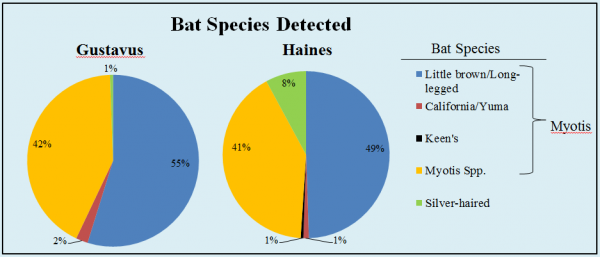
Back in the bat mobile with Randles, it’s been a fairly quiet night. We’ve heard about five bat calls between Chilkoot Lake and end of Mud Bay Road. Randles says before this, she wasn’t a big fan of bats. But her perspective has changed.
“Then when I come out here to study these guys, all of a sudden I’m not hating bats for no reason,” Randles said. “I have a better appreciation for what they do, how they fit into the system and what the benefits of having them around are.”
And besides, she says, they’re just so cute-sounding.
Emily Files is a reporter at KHNS in Haines.




